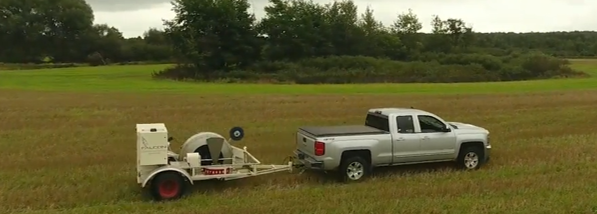Getting to Know Your Soil
Article Written By: Todd Hunsicker, Growmark FS
Following harvest one of the first steps to preparing for the next growing season is soil testing. Without knowing what nutrients are currently in the soil, applications of plant food may be a poor investment for growers and could lead to off-target movement. When nutrients leave the soil profile, they can have negative environmental impacts as well as negative impacts on the crop growing in the field. Without proper pH and nutrient balance, a crop will never be able to meet its full potential.

Historically, soil testing has been completed on a composite or whole field basis. Composite sampling is the process of using a soil probe and collecting cores from random parts of a whole field. Ideally, a composite sample would consist of one core per acre in the field. These cores are collected in a bucket where they are mixed together and approximately one cup of soil is sent off to the lab to be analyzed. This will provide the average pH and nutrient values for the field.
In recent years technology has led to new methodology for taking sub-field soil samples. Sub-field soil testing takes whole fields, breaking them down into smaller sections to better understand the variability in the field. How the field is broken down can depend on each individual grower. There are two main schools of thought: Grid based sampling or Zone based sampling. Grid based soil sampling is taking a field and breaking it up into smaller grids. These grids are created in a mapping software prior to heading to the field for sampling. Zone based sampling takes field data (yield data, Soil EC – electrical conductivity) and uses these parameters to create zones. In both cases zones can vary in size depending on the farming operation, commonly sub-field zone can be as small as 1 acre up to 10 acres in size.
With the increased number of soil samples being taken, companies like Growmark FS have invested in sampling equipment that allows for them to take better quality samples more efficiently. One of those investments is the Falcon Automated Soil Sampler. Pulled by any pickup truck or tractor, the operator is able to pull soil cores, mix the cores together and deposit the sample into a collection bag all from the cab of the vehicle. Inside the cab the sub-field zones are loaded onto a smart tablet – and the software will guide the operator through the field – each sub-field zone has a corresponding sample bag. The Falcon consists of a stainless-steel drum with a probe on it, the drum is lowered onto the ground where it is pulled along the surface of the soil. The probe will randomly pull a core every 15 feet, meanwhile the new core is continually being mixed with the previous cores as the drum spins. Once the operator has driven through the specified sub-field zone, the drum is lifted and rotated, and a funnel is inserted into the drum depositing the sample into a pre-labeled sample bag. Any excess soil is removed from the drum at the same time. The operator is then able to move onto the next grid/zone and continue sampling, without ever having to leave the cab of the vehicle. A typical sample from the Falcon Soil Sampler would include 50-60 cores per sample, enough soil to fill a 5-gallon bucket. These cores are continuously mixed as the drum rolls across the field – and a randomly selected sample is then prepared for the lab.
When thinking about soil testing it is important to remember that no matter which methodology is selected, one cup of soil is being sent to a soil lab to be analyzed. One cup – to represent the 2 million pounds of soil is estimated to be in one acre. When composite sampling that one cup of soil could be representing upwards of 40 million pounds of soil in the field. Whether growers are headed out to the field to pull soil samples or are working with a trusted advisor to do the sampling for them, it is important to remember that these samples are going to be laying the groundwork for the whole next growing season. The decisions a grower is going to make from this data will not only affect their bottom line for the next year but also affects their greatest natural resource – the soil.